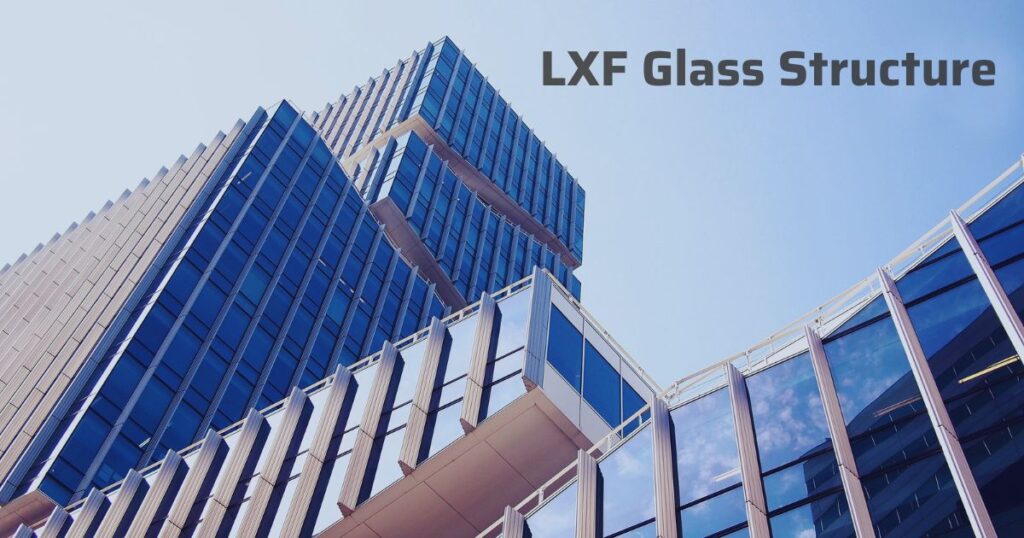LXF glass structure is a major advancement in glass technology. It combines beauty with functionality. This innovative material meets the demands of modern architecture, offering strength, clarity, and safety. As urban environments grow, materials that enhance aesthetics while ensuring durability are crucial. This guide explores the features of LXF glass structure and its role in sustainable building practices.
In this article, we will discuss what sets LXF glass apart from traditional glass. We will examine its applications in residential and commercial projects. By understanding LXF glass’s benefits, architects and homeowners can make informed decisions that enhance their projects.
What Makes LXF Glass Structure Unique?
LXF glass structure stands out due to its manufacturing process and material composition. Unlike traditional glass, LXF glass consists of multiple bonded layers using a polymer interlayer. This laminated structure increases strength and flexibility, allowing it to withstand greater forces.
The multilayer design not only provides durability but also absorbs stress effectively. This makes LXF glass ideal for high-rise buildings and structures exposed to extreme weather. With these unique characteristics, LXF glass is both visually appealing and built to last.
Strength and Durability of LXF Glass Structure
LXF glass structure offers exceptional strength and durability. Its laminated design allows it to resist significant impacts, making it less prone to breakage. This is especially important in urban areas where buildings face high wind loads and seismic activity.
Additionally, LXF glass is shatterproof. In extreme pressure situations, it cracks in a way that holds pieces together, reducing injury risks. This feature enhances safety in public spaces like airports and shopping malls, where large crowds gather. LXF glass’s durability means it requires fewer replacements, making it a cost-effective choice for builders.
Safety Features of LXF Glass Structure
Safety is crucial in architectural design, and LXF glass structure excels in this area. Its multilayered composition enhances safety, as the interlayer holds fragments together if breakage occurs. This reduces sharp edges and injury risks, making it ideal for schools, hospitals, and public areas.
Moreover, LXF glass can be treated with coatings that enhance safety. For instance, anti-slip coatings can be added to glass flooring. Tempered glass options provide protection against thermal stress. The combination of strength and customizable safety features makes LXF glass a top choice for architects.
Clarity and Aesthetic Appeal of LXF Glass Structure
LXF glass structure is known for its stunning clarity and aesthetic appeal. Its transparency allows for unobstructed views, enhancing any space’s visual experience. This is particularly desirable in modern designs emphasizing open layouts and natural light.
Architects can choose various finishes for LXF glass, including frosted, tinted, or patterned options. This flexibility enables unique designs that fit the project’s vision. The combination of strength and beauty makes LXF glass perfect for large windows, glass walls, and facades.
Energy Efficiency Benefits of LXF Glass Structure
Energy efficiency is vital in modern building design. LXF glass structure offers significant advantages here. Specialized coatings can reduce heat transfer, maintaining comfortable indoor temperatures. This thermal performance leads to reduced energy costs for heating and cooling.
By minimizing reliance on artificial climate control, LXF glass supports sustainability. It contributes to lower carbon footprints and energy consumption. Utilizing LXF glass can lead to certifications like LEED (Leadership in Energy and Environmental Design), appealing to eco-conscious developers.
Also Read: SoccerAgency.net Contact Address Brad Barkshaw
Applications of LXF Glass Structure in Modern Architecture
LXF glass structure is versatile, suitable for various applications across different sectors. In commercial buildings, it is often used in high-rise constructions, combining strength and aesthetics. Its ability to withstand harsh weather while allowing expansive views makes it popular for office buildings and hotels.
In residential architecture, LXF glass features prominently in large sliding doors, expansive windows, and glass staircases. Homeowners appreciate the modern, airy feel that LXF glass provides. It connects indoor spaces with the outdoors and enhances functionality and design.
Design Flexibility with LXF Glass Structure
LXF glass structure offers design flexibility. Architects can choose from various thicknesses, sizes, and finishes to create customized solutions. This adaptability allows creative freedom, enabling innovative applications that traditional glass cannot accommodate.
LXF glass can also be fabricated into various shapes and configurations, including curved panels. This expands the possibilities for architectural expression. Tailoring LXF glass structures to specific project needs ensures they meet functional requirements while resonating with the overall design aesthetic.
Considerations and Limitations of LXF Glass Structure
Despite its benefits, there are considerations and limitations to using LXF glass structure. One concern is the cost, as advanced manufacturing contributes to a higher price compared to traditional glass. This may be a challenge for smaller projects with tight budgets.
Installation of LXF glass requires skilled professionals experienced in handling this material. Improper installation can compromise the glass’s integrity and safety features. Working with experienced architects and contractors is essential for optimal results. By weighing considerations against benefits, stakeholders can make informed decisions about LXF glass in their projects.
Future Trends and Innovations in LXF Glass Structure
The future of LXF glass structure looks promising, with ongoing innovations in architectural glass. One trend is integrating smart technology into LXF glass, allowing adjustable tinting and energy-efficient coatings. These advancements enhance functionality, energy efficiency, and user comfort.
Research continues to develop stronger, lighter materials, increasing LXF glass’s applicability. As technology evolves, new possibilities for using LXF glass will emerge, including applications in solar energy and advanced safety features. The continued development of LXF glass structures will shape modern architecture, ensuring safety, aesthetics, and sustainability remain priorities.
Conclusion
In conclusion, LXF glass structure is a revolutionary material that combines strength, safety, and aesthetic appeal. It is a preferred choice for modern architecture. Its unique properties and versatile applications enable stunning designs that prioritize functionality and style. As the industry evolves, LXF glass will play a significant role in shaping architectural design, providing innovative solutions for contemporary living. Understanding the features and benefits of LXF glass structure allows stakeholders to enhance their projects while contributing to a sustainable future.
